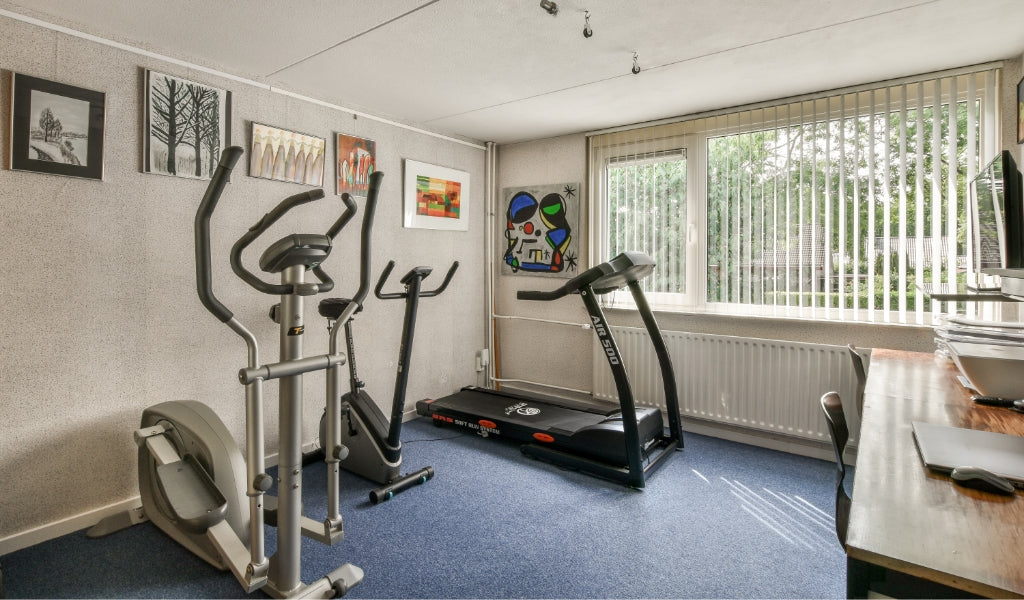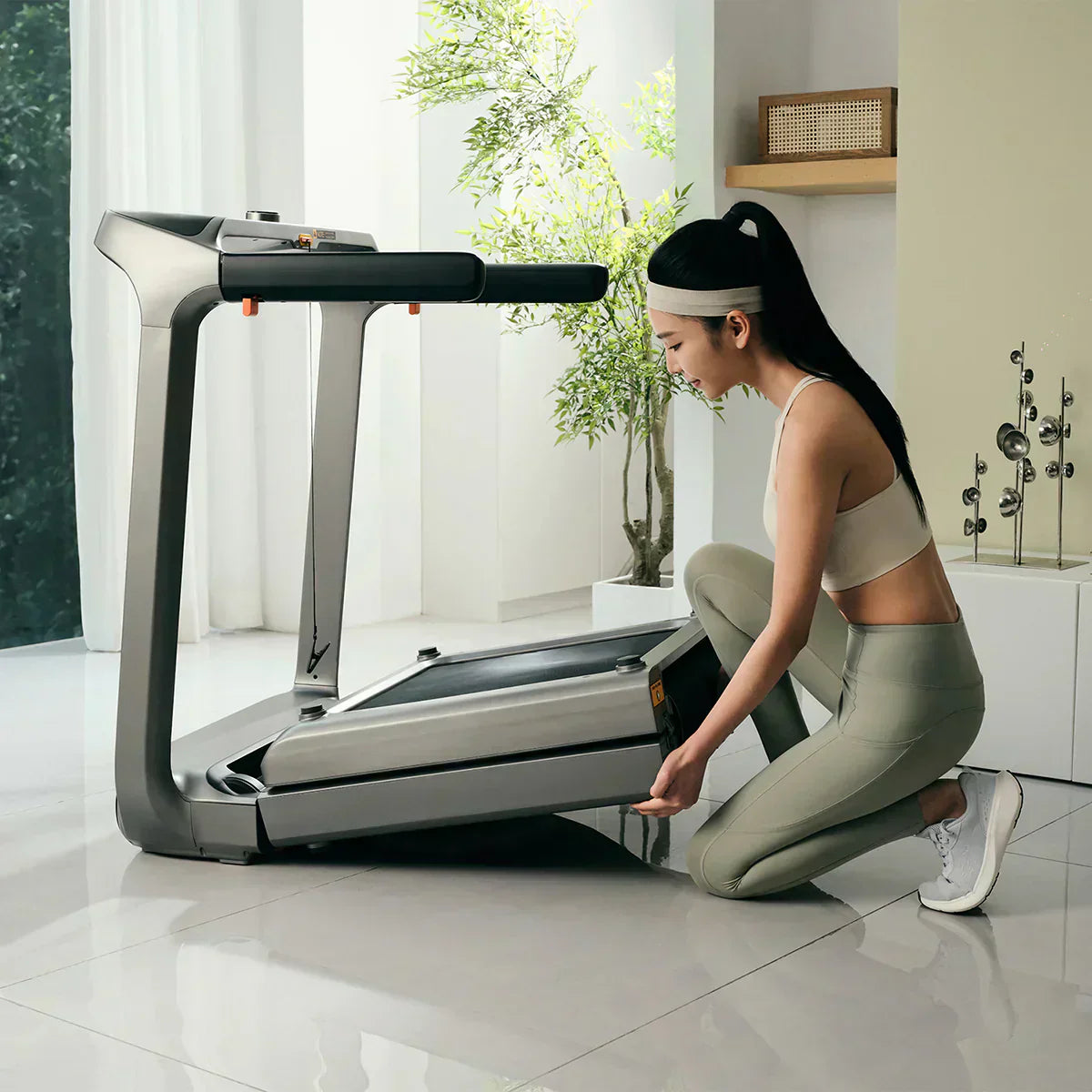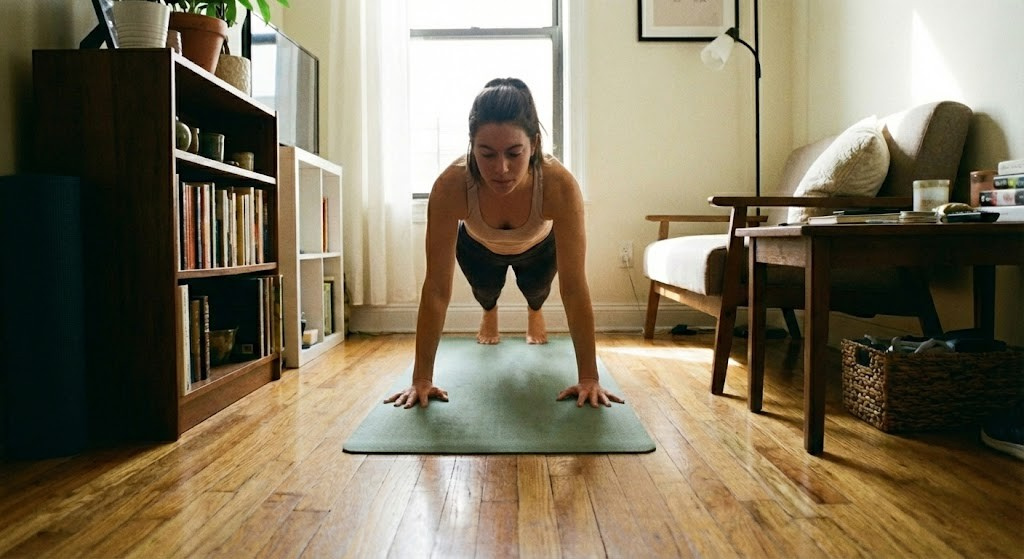The right list of equipment for small spaces depends on your goals, your habits, and the room you’ve actually got.
Fitness isn’t one-size-fits-all: for a single workout like cardio, you can pick from treadmills, spin bikes, rowers, or even skipping rope, each with its own intensity, impact, and learning curve. The same goes for strength training; the choices are endless.
However, “small space” doesn’t always mean the same thing. Sometimes it’s a garage corner or basement corner for solo training, or it can be a compact studio serving paying clients all day.
Cardio and strength are the backbone in both cases, but priorities shift in terms of durability, warranties, noise, and spacing.
Therefore, we have broken down the smart picks for both home gyms and small studios below so you can meet your goals without cramping your space.
Small-Space Home Gym
Small home gym doesn't always mean sacrificing variety and effectiveness in your workouts. With right set of equipment and a plan, you can build a versatile setup even in a corner of your living area. Here's how:
Buy What Actually Gets Used (and Fits)
In at-home gyms, the “must-haves” should be simple: a solid strength base and one cardio piece you’ll actually use three to five times a week.
For strength, adjustable dumbbells or kettlebells paired with a stowable bench usually punch far above their weight. If ceiling height allows, a fold-flat half rack is a nice add-on.
For cardio, a folding treadmill, spin bike, or foldable rower almost covers most preferences without swallowing up the whole room.
The Space Math to Keep in Mind
A treadmill requires more than just its footprint. You need six clear feet behind it for safety and at least two feet on the sides.
Similarly, there are foldable rowers, but you’ll still need a couple of feet clear to unfold and use them. StepMills almost never work in homes with eight-foot ceilings, so the practical alternative is an incline treadmill or a stair master.
You need to think about layout in terms of clearance, not just machine size, to prevent cramped, unsafe setups.
Noise and Neighbors
If you live above someone else, the thud of running is not your friend.
Magnetic-resistance rowers and bikes are far quieter. Rubber tiles beneath heavier equipment help too. And avoid distractions like scrolling your phone on a treadmill because trip-and-fall injuries happen more often than people admit.
Smart Substitutions
If you love the StepMill at your commercial gym and want to invest in a treadmill as well, then recreate the stimulus with a treadmill set at an 8–12% incline or a heavy step platform. This way you can get almost the same high-intensity workout as StepMill but without compromising space.
Similarly, if there’s no space for a rack, single-leg dumbbell work and a wall-mounted functional trainer is one of the best weight machines and can replace most barbell lifts. If your space allows, a compact functional trainer also adds rotation and pulling strength without requiring a massive footprint, plus it gives you multiple workout options to avoid boredom.
Small Studio Gym for Commercial Use
Unlike setting up a home gym, creating a small commercial studio is more challenging, not only because of limited space, but also because you need to choose fitness machines that meet client demand and keep your business running profitably.
What Can Survive a Busy Schedule
Studio gyms flip the priorities. You’re managing throughput, client safety, and wear-and-tear across dozens of daily users. That means commercial-grade treadmills with reinforced decks, spin bikes with low-maintenance drives, and one rower that stores upright without fuss.
For strength, racks with spotter arms, selectorized cable stations, and sometimes a Smith machine for beginners.
Safety, Spacing, & Flow
The layout matters as much as the machines. Treadmills should always leave clear egress behind the belt.
Rowers should face inward so coaches can monitor posture. Plate trees and dumbbell racks need to stay out of main walkways to reduce trip hazards.
In a small studio, bad spacing makes accidents more likely than bad lifting.
Ceiling Height and Utilities
Nine-foot ceilings are ideal if you want to offer StepMills or overhead lifts without forcing clients to hunch.
Power demands matter too, so avoid daisy-chained strips for treadmills and rowers. Small studios heat quickly, so you need to take into account HVAC and ventilation.
And don’t forget the flooring: thick rubber tiles for strength zones, anchored platforms if you’re doing Olympic lifts.
Programming That Fits a Small Studio
The best studios don’t try to fit every machine on the market. They create flow. Circuits that rotate clients from bikes to cable work to dumbbells minimize setup time.
Progressions can be built into the programming—tempos, pauses, unilateral work, and so on, without adding another bulky piece of equipment.
Machines like the Hoist CF-3755 Commercial Dual Angle Smith Machine, also available at The Fitness Outlet, thrive in this environment: heavy-duty build, smooth bar path, and safeties built for all-day use.
Similarly, the Hoist Mi7 Functional Training System is also ideal in this setting. It combines dual adjustable pulleys, a built-in pull-up station, and a compact design, so trainers can coach hundreds of variations without eating up the floor.
The “Audit and Adapt” Method
One of the simplest ways to get it right is to observe what gets used most in a full-size gym in your locality and then adapt.
If you see every treadmill full but bikes empty, invest in a space-friendly treadmill alternative. If clients or you love the stair machine, replicate the demand with incline treadmill training or step circuits.
Adaptation matters more than duplication when floor space is scarce.
Frequently Asked Questions
1. What’s the best way to judge equipment value in small gyms?
In at-home gyms, it comes down to versatility. The more exercises you can perform with a single machine, the more “worth it” it is. Multi-use gear like functional trainers, adjustable dumbbells, or a Smith machine with safeties often outperform single-use stations.
2. What safety factors should I consider when selecting equipment for small spaces?
Make sure there’s enough room for people to move around safely. Avoid overcrowding, choose stable equipment with solid build quality, and keep walkways clear to reduce the risk of accidents.
3. How do I choose durable equipment for high-traffic small studios?
Look for commercial-grade machines with strong warranties. Stick with trusted brands, and prioritize equipment built with heavy-duty materials as they’ll handle daily use without constant repairs.
Key Takeaway
The golden rule for both home and studio gyms is the same: if it feels tight on paper, it’ll feel even tighter in real life.
Leave clear walking lanes, emergency egress behind cardio equipment, and open space for warm-ups and stretching. Dropping one “nice-to-have” machine often makes the whole gym safer and more usable.





Share:
How to Choose the Best Commercial Treadmill for Your Gym: A Detailed Guide
What to Do When Your Cardio Machine Stops Working Properly